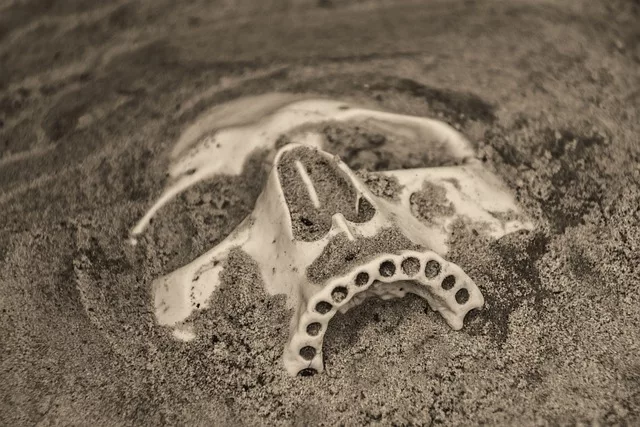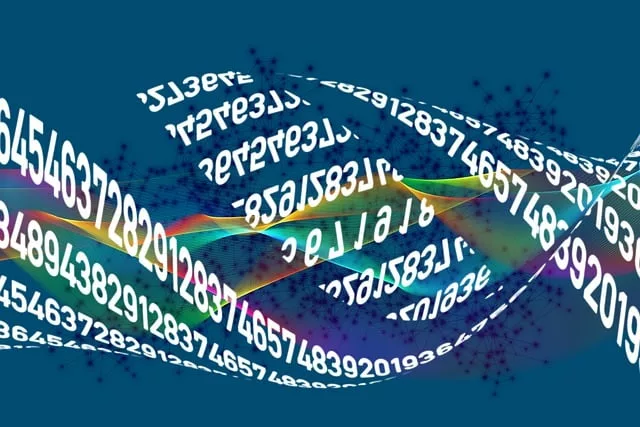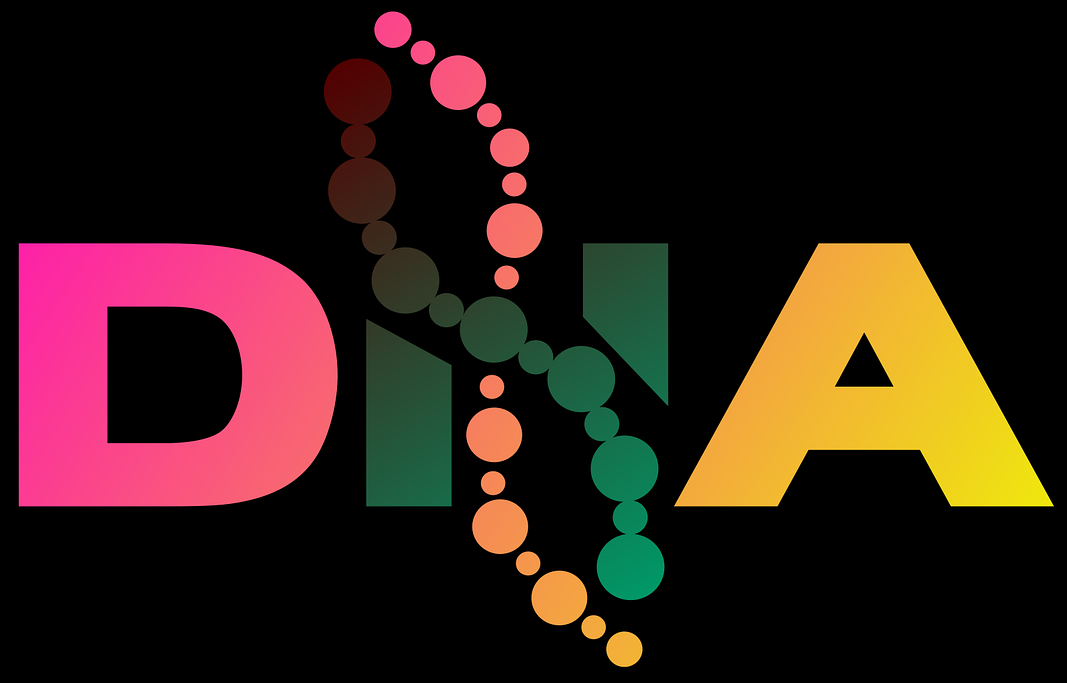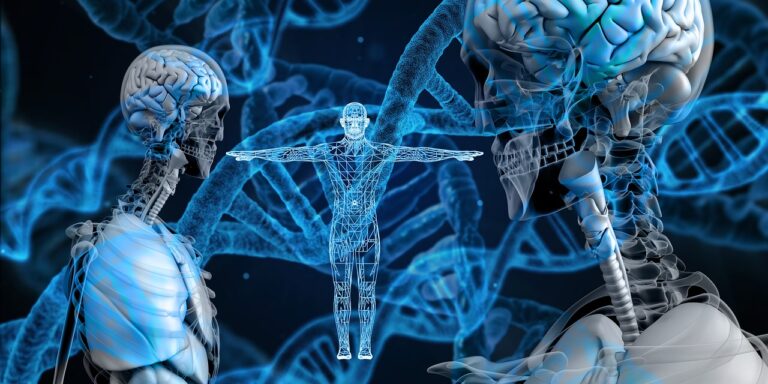5 Powerful Ways Forensic Genealogy Aids Modern CSI
In the world of crime scene investigations, solving mysteries often requires a combination of traditional methods and cutting-edge technologies. One such innovative tool that has revolutionized the field is forensic genealogy.
While the term might sound complex, its impact on cracking cold cases and identifying perpetrators cannot be overstated. In this article, we’ll dive into how this technology and crime scene investigations work together seamlessly, shedding light on unsolved crimes and bringing closure to victims and their families.
Table of Contents
What is Forensic Genealogy?
Forensic genealogy is essentially the marriage of genetics and genealogical research applied to criminal investigations. It involves leveraging DNA analysis and genealogical techniques to identify individuals involved in criminal activities, often when traditional investigative methods have reached a dead end.
However, unlike traditional genealogy, which focuses on tracing family histories and ancestry, forensic genealogy applies these methods to solve crimes. It’s like piecing together a puzzle, but instead of matching shapes and colors, forensic genealogists match DNA profiles and familial relationships to uncover hidden connections.
At its core, forensic genealogy involves using genetic information and genealogical research techniques to identify individuals involved in criminal activities.
The Emergence of Forensic Genealogy
While the use of DNA in criminal investigations has been around for decades, forensic genealogy as we know it today has only recently gained widespread attention. Advances in DNA sequencing technology, coupled with the availability of large genetic databases and online genealogy platforms, have transformed the landscape of forensic investigations.
The Importance of Collaboration
One of the key aspects is its collaboration with traditional crime scene investigation techniques. While DNA evidence can provide crucial leads, it’s often the meticulous work of crime scene investigators that lays the groundwork for forensic genealogists to do their job effectively. By working hand in hand, these two disciplines can unlock mysteries that were once thought unsolvable.
In the following sections, we’ll explore the complexities of forensic genealogy, its role in crime scene investigations, and the ethical considerations surrounding its use. Through case studies and real-world examples, we’ll demonstrate how this powerful tool has breathed new life into cold cases and changed the landscape of criminal justice.
Understanding Forensic Genealogy
Forensic genealogy may sound like a complex term, but its underlying principles are quite straightforward. Let’s break down what it entails and how it works.
Evolution of Forensic Genealogy
Forensic genealogy has evolved significantly over the years, propelled by advancements in DNA technology and computational tools. The advent of next-generation sequencing methods has made it faster and more cost-effective to analyze DNA samples, while the availability of vast genetic databases has expanded the pool of potential matches.
Additionally, sophisticated algorithms and software platforms have streamlined the process of identifying familial relationships and constructing family trees.
Key Components of Forensic Genealogy
- DNA Analysis: DNA serves as the cornerstone of forensic genealogy. By extracting DNA from crime scene evidence and comparing it to genetic databases, forensic analysts can identify potential matches and narrow down the pool of suspects.
- Genealogical Research: Once a DNA match is identified, genealogical research comes into play. Forensic genealogists dig into historical records, public databases, and online genealogy platforms to trace familial relationships and construct family trees.
- Genetic Databases: Genetic databases play a crucial role in forensic genealogy by providing a vast repository of DNA profiles. These databases contain genetic information from individuals who have voluntarily submitted their DNA for genealogical or ancestry purposes. By searching these databases, forensic analysts can find potential relatives of an unknown suspect and trace their familial connections.
In the next section, we’ll explore how forensic genealogy is applied in the context of crime scene investigations, with real-world examples illustrating its effectiveness in solving cold cases and bringing perpetrators to justice.
The Role Forensic Genealogy in CSI
Crime scene investigation (CSI) has long relied on fingerprints, ballistics, and blood analysis to identify perpetrators. But in recent years, a revolutionary technique called forensic genealogy emerged as a powerful tool for cracking cold cases. Here are five ways forensic genealogy is aiding modern CSI:
- Identifying Unknown Suspects: Traditional methods often leave unidentified DNA at crime scenes. Forensic genealogy analyzes this DNA to trace the suspect’s family tree, leading investigators to potential relatives and ultimately the culprit.
- Narrowing Down Suspect Pools: In cases with numerous suspects, forensic genealogy can help narrow the focus by pinpointing specific family lineages that share DNA similarities with the crime scene sample.
- Generating New Leads: Cold cases often go stagnant due to a lack of fresh leads. But with this technology it can breathe new life into investigations by providing unexpected connections and prompting further inquiries.
- Uncovering Familial Links: Some crimes involve perpetrators who are related to the victim. Forensic genealogy can expose these connections, providing crucial context for investigators.
- Public Engagement: The use of forensic genealogy has garnered significant public interest. This can lead to increased awareness of cold cases and encourage people to come forward with information that might be crucial to solving them.
It serves as a powerful investigative tool in criminal cases where traditional methods have failed to yield results. By leveraging DNA evidence obtained from crime scenes, forensic genealogists can identify potential suspects or victims by matching their DNA profiles to individuals or relatives in genetic databases.
Cold Cases Solved through Familial DNA Matches

One of the most notable applications of forensic genealogy is in solving cold cases – unsolved crimes that have remained dormant for years or even decades. In many cold cases, traditional DNA databases fail to yield direct matches to known suspects, leaving investigators at a standstill.
However, by employing these techniques, analysts can search for familial DNA matches, identifying potential relatives of the perpetrator and narrowing down the pool of suspects.
Identification of Unknown Victims
Forensic genealogy is also instrumental in identifying unknown victims of crimes, particularly in cases involving missing persons or unidentified remains. By analyzing DNA samples obtained from unidentified remains and comparing them to genetic databases, forensic analysts can identify familial matches that lead to the identification of the victim and provide closure to their families.
Tracking Down Suspects through Familial Relationships
Another one of its key applications is in tracking down suspects through their familial relationships. Even if the perpetrator’s DNA is not directly linked to a crime scene, familial DNA matches can provide valuable leads by identifying relatives who may have information about the suspect’s whereabouts or involvement in the crime.
Collaboration Between Traditional CSI Techniques
The integration of forensic genealogy with conventional crime scene investigation methods is crucial for enhancing the efficiency and effectiveness of both fields.
Importance of Collaboration
Collaboration between forensic genealogists and crime scene investigators is paramount in ensuring that all available evidence is effectively utilized to solve crimes. While forensic genealogy focuses on DNA analysis and genealogical research, crime scene investigators and Detectives play a crucial role in collecting and preserving physical evidence from crime scenes.
Leveraging DNA Evidence
DNA evidence obtained from crime scenes serves as the foundation for these investigations. Crime scene investigators collect biological samples such as blood, saliva, or hair follicles, which are then analyzed for DNA profiles. These DNA profiles are compared to genetic databases to identify potential matches or familial relationships.
Crime Scene Analysis
The meticulous analysis of crime scenes by forensic investigators provides valuable clues and physical evidence that can corroborate findings from these investigations. By documenting and analyzing bloodstains, fingerprints, footprints, and other trace evidence, crime scene investigators can reconstruct the sequence of events leading up to a crime and provide context for DNA findings.
Cross-Disciplinary Expertise
Both forensic genealogy and crime scene investigation require specialized knowledge and expertise. Forensic genealogists possess skills in DNA analysis, genetic genealogy, and historical research, while crime scene investigators are trained in evidence collection, forensic analysis, and crime scene reconstruction. By combining their expertise, investigators can approach cases from multiple angles and uncover hidden connections.
DNA Collection and Evidence Handling at the Crime Scene
Collecting DNA evidence at a crime scene is a critical step in the investigative process. Crime scene investigators (CSIs) follow strict protocols to ensure the proper collection, preservation, and handling of DNA evidence.
DNA Collection Techniques
CSIs use various techniques to collect DNA evidence from crime scenes:
- Swabbing: Swabs are used to collect biological material such as blood, saliva, or skin cells from surfaces, objects, or wounds.
- Cuttings: Samples of fabric, hair, or other materials containing biological material may be collected for analysis.
- Collection of Biological Fluids: Bodily fluids such as blood, semen, or saliva may be collected from surfaces using specialized tools and techniques.
Preservation and Packaging
Once collected, DNA evidence is carefully preserved and packaged to prevent contamination and degradation:
- Sterile Packaging: Swabs and other collection tools are placed in sterile packaging to prevent contamination with extraneous DNA.
- Chain of Custody Documentation: Each piece of evidence is labeled, documented, and sealed to maintain a chain of custody, ensuring its integrity and admissibility in court.
- Proper Storage: DNA evidence is stored in a secure, climate-controlled environment to prevent degradation and preserve its integrity for analysis.
Transport to the Forensic Laboratory
After collection and packaging, DNA evidence is transported to a forensic laboratory for analysis. Proper chain of custody procedures are followed during transportation to ensure the integrity of the evidence:
- Secure Transport: Evidence is transported in sealed, tamper-evident containers to prevent unauthorized access or tampering during transit.
- Trained Personnel: Trained personnel, often accompanied by law enforcement officers, handle the transport of DNA evidence to maintain its integrity and security.
- Documentation: Detailed documentation of the chain of custody, including the date, time, and individuals handling the evidence, is maintained throughout the transportation process.
Handover to the Forensic Genealogist
Once DNA evidence reaches the forensic laboratory, forensic genealogists take over the analysis process:
- Extraction and Analysis: Forensic scientists extract DNA from the collected samples and analyze it to generate DNA profiles.
- Upload to Genetic Databases: DNA profiles obtained from crime scene evidence are uploaded to genetic databases, such as GEDmatch or CODIS, for comparison and analysis.
- Familial Matching: Forensic genealogists use specialized software and techniques to identify potential familial matches and construct family trees based on DNA profiles obtained from crime scene evidence.
- Collaboration with Investigators: Forensic genealogists collaborate closely with investigators to interpret DNA findings, identify potential suspects or victims, and provide leads for further investigation.
In conclusion, the proper collection, preservation, and handling of DNA evidence at crime scenes are crucial for the success of forensic genealogy investigations. By following rigorous protocols and maintaining chain of custody procedures, CSIs ensure that DNA evidence is preserved and analyzed accurately, ultimately contributing to the resolution of criminal cases.
Case Example: The Case of the East Area Rapist/Original Night Stalker (EAR/ONS)
The case of the East Area Rapist/Original Night Stalker (EAR/ONS), also known as the Golden State Killer, exemplifies the power of collaboration between forensic genealogy and traditional crime scene investigation techniques. For decades, law enforcement agencies struggled to identify the elusive perpetrator responsible for a series of rapes and murders in California during the 1970s and 1980s.
In 2018, investigators made a breakthrough in the case by leveraging forensic genealogy techniques to identify Joseph James DeAngelo as the suspected perpetrator. By analyzing DNA evidence obtained from crime scenes and comparing it to genetic databases, forensic genealogists were able to trace DeAngelo’s familial relationships and narrow down the pool of suspects.
In the final section of this article, we’ll explore the ethical considerations in criminal investigations and discuss the implications for privacy and civil liberties.

Ethical and Legal Considerations
While forensic genealogy has proven to be a powerful tool in solving crimes, its use raises important ethical and legal considerations. In this section, we’ll explore the ethical issues surrounding the use in criminal investigations and discuss the implications for privacy and civil liberties.
Informed Consent
One of the primary ethical concerns with forensic genealogy is the issue of informed consent. Unlike traditional forensic DNA databases, which require individuals to voluntarily submit their DNA for law enforcement purposes, genetic genealogy databases are often populated by individuals who have submitted their DNA for ancestry or genealogy purposes. This raises questions about whether these individuals have consented to their genetic information being used in criminal investigations.

Privacy and Data Security
Privacy and data security are also significant ethical considerations in these types of investigations. Genetic information is inherently sensitive and can reveal not only an individual’s identity but also information about their health, ancestry, and familial relationships. The use of genetic databases for law enforcement purposes raises concerns about the potential misuse or unauthorized access to this sensitive information.
Fourth Amendment Rights
The use of forensic genealogy in criminal investigations raises questions about Fourth Amendment rights against unreasonable searches and seizures. While DNA evidence obtained from crime scenes is often used to identify potential suspects, the use of genetic databases to search for familial matches raises concerns about the scope of permissible searches and the protection of individual privacy rights.
Admissibility of Evidence
Another legal consideration is the admissibility of evidence in court. While DNA evidence has long been admissible in criminal trials, questions may arise about the reliability and accuracy of forensic genealogy techniques, as well as the chain of custody and authentication of genetic data obtained from third-party databases.
Regulatory Frameworks
To address these ethical and legal concerns, regulatory frameworks governing its use in criminal investigations are essential. These frameworks may include guidelines for obtaining informed consent, protocols for data sharing and access, safeguards for privacy and data security, and mechanisms for ensuring the reliability and accuracy of genealogy techniques.
Challenges and Future Directions
As forensic genealogy continues to evolve, several challenges and opportunities lie ahead. In this section, we’ll explore the current obstacles and discuss potential advancements and future directions for the field.
Limited DNA Databases
One of the primary challenges facing this technology is the limited size and scope of existing DNA databases. While genetic these databases such as GEDmatch and AncestryDNA contain millions of genetic profiles, they represent only a fraction of the global population. Limited database coverage can hinder the ability to identify familial matches and narrow down potential suspects in criminal investigations.
Privacy Concerns
Privacy concerns surrounding the use of genetic data are another significant challenge. Genetic information is inherently sensitive and can reveal intimate details about an individual’s health, ancestry, and familial relationships. The use of genetic databases for law enforcement purposes raises concerns about the potential misuse or unauthorized access to this sensitive information, as well as the implications for individual privacy rights.
Expansion of Genetic Databases
One potential solution to the challenge of limited database coverage is the expansion of genetic databases through increased participation and collaboration. Efforts to encourage more individuals to submit their DNA for genealogical or ancestry purposes, as well as partnerships between law enforcement agencies and commercial genetic testing companies, could help expand the pool of genetic profiles available for analysis.
Technological Advancements
Advancements in DNA sequencing technology and computational tools are also driving innovation for the future. Next-generation sequencing methods are making it faster and more cost-effective to analyze DNA samples, while sophisticated algorithms and software platforms are streamlining the process of identifying familial relationships and constructing family trees. Continued investment in research and development is essential to harnessing the full potential of these technological advancements.
Conclusion
The integration of forensic genealogy with conventional crime scene investigation methods represents a significant breakthrough in criminal justice. By carefully analyzing DNA evidence, rigorously tracking family connections, and collaborating across different specialties, forensic genealogy has become a powerful tool in the quest for truth and justice.
As we reflect on the transformative impact of forensic genealogy, we must also acknowledge the ethical and legal considerations that accompany its use. The safeguarding of individual privacy rights, the promotion of informed consent, and the maintenance of rigorous standards for data security are paramount in ensuring the responsible application of this powerful investigative tool.
Looking ahead, the future holds boundless potential. Continued advancements in technology, expanded collaboration among stakeholders, and a steadfast commitment to ethical practice will further elevate the efficacy and integrity of forensic genealogy in solving crimes and bringing closure to victims and their loved ones.
I trust you found this article enlightening. Feel free to leave any comments below, and make sure not to miss my piece on the flaws of crime scene evidence contamination. Also, explore my other website for the newest products and technologies to safeguard your home and family.
Willie McCain






